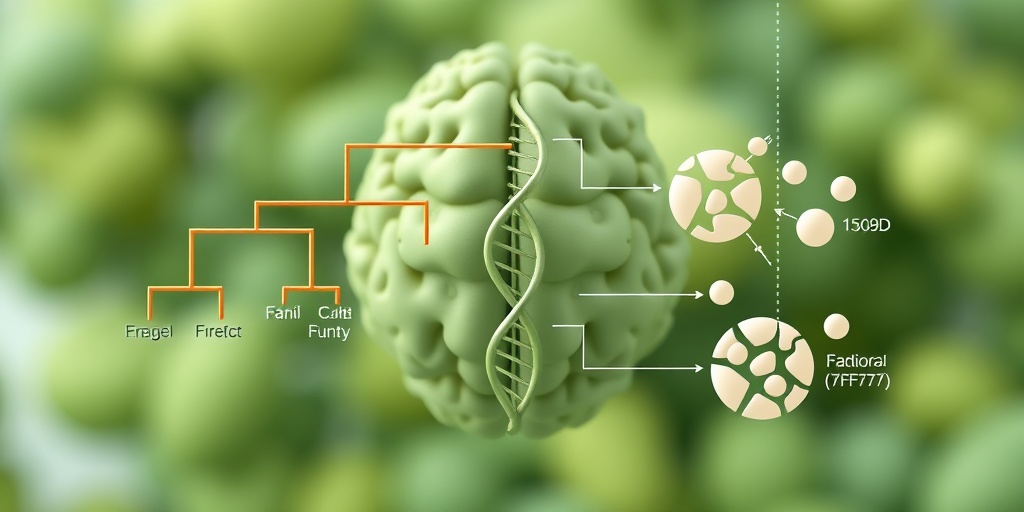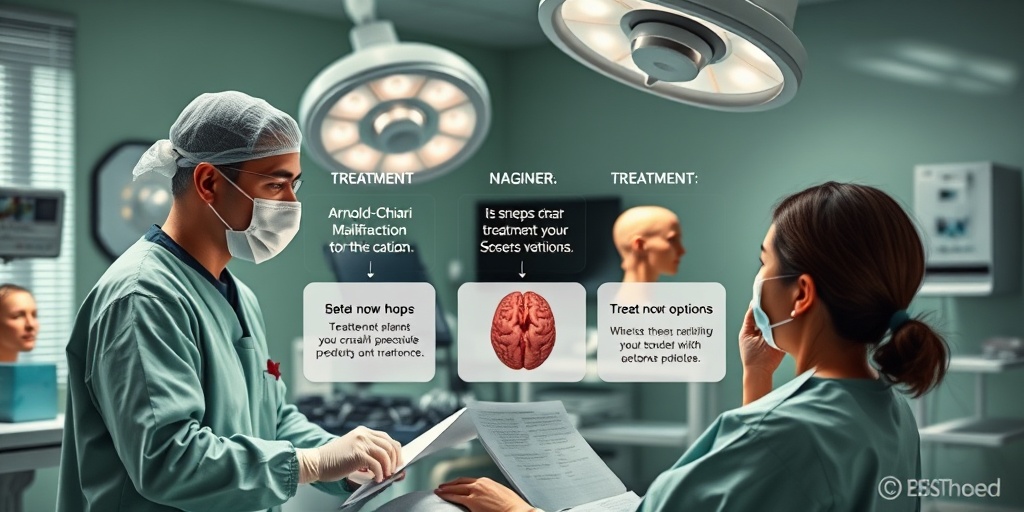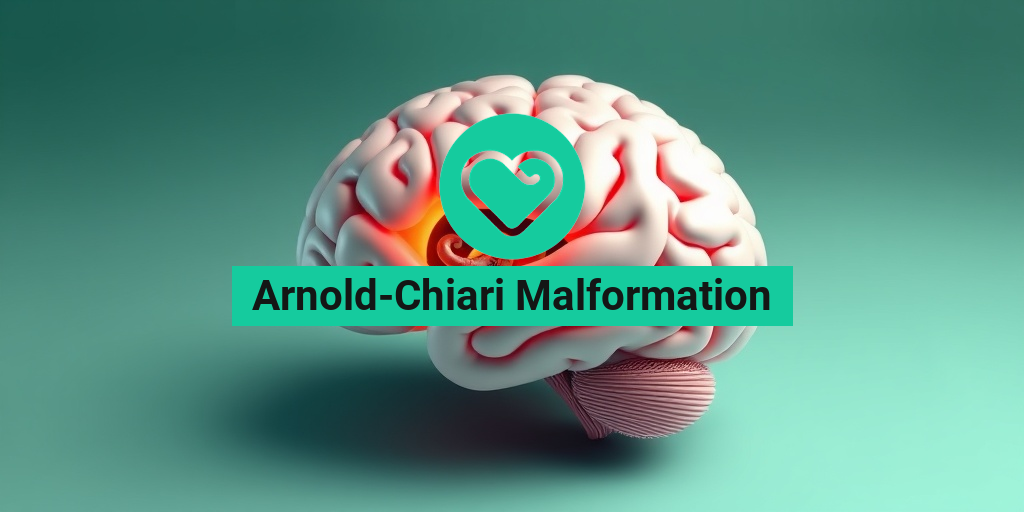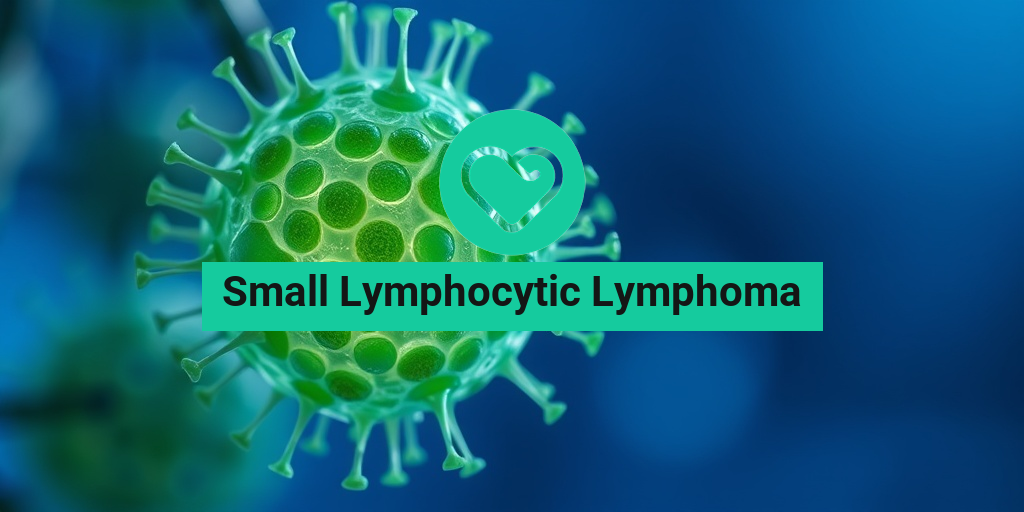What Is Arnold-Chiari Malformation?
Arnold-Chiari Malformation (ACM) is a neurological condition that occurs when the brain tissue extends into the spinal canal. This happens due to a structural defect in the skull, which can lead to a variety of symptoms and complications. The condition is named after the two doctors, Hans Chiari and Julius Arnold, who first described it in the late 19th century.
There are several types of Arnold-Chiari Malformation, with Type I and Type II being the most common. Type I is often asymptomatic and may go undiagnosed until adulthood, while Type II, also known as Arnold-Chiari Malformation Type II, is typically associated with more severe symptoms and is often diagnosed in infancy.
Understanding the Types of Arnold-Chiari Malformation
- Type I: Characterized by the downward displacement of the cerebellar tonsils through the foramen magnum. Symptoms may not appear until later in life.
- Type II: Involves more significant brain structure abnormalities and is often associated with spina bifida. Symptoms usually present at birth.
Diagnosis of Arnold-Chiari Malformation typically involves imaging studies such as MRI, which can reveal the extent of the malformation and any associated complications. Understanding the type of ACM is crucial for determining the appropriate treatment and management strategies.
Arnold-Chiari Symptoms
The symptoms of Arnold-Chiari Malformation can vary widely depending on the type and severity of the condition. While some individuals may experience no symptoms at all, others may face a range of neurological issues. Here are some common symptoms associated with Arnold-Chiari Malformation:
Common Symptoms
- Headaches: Often described as severe and occurring at the back of the head, these headaches can worsen with coughing, sneezing, or straining.
- Neck Pain: Many individuals report chronic neck pain that can radiate down the shoulders and arms.
- Dizziness and Balance Issues: Problems with coordination and balance may arise, leading to an increased risk of falls.
- Numbness and Tingling: Some may experience sensations of numbness or tingling in the arms and legs.
- Vision Problems: Blurred or double vision can occur due to pressure on the optic nerves.
- Difficulty Swallowing: This can be a result of nerve compression affecting the swallowing muscles.
Symptoms in Children
In infants and children, symptoms may manifest differently. Common signs include:
- Difficulty feeding: Infants may struggle to latch or feed properly.
- Weakness: There may be noticeable weakness in the arms or legs.
- Developmental Delays: Children may experience delays in reaching developmental milestones.
If you or someone you know is experiencing these symptoms, it is essential to consult a healthcare professional for a thorough evaluation. Early diagnosis and intervention can significantly improve outcomes and quality of life.
Seeking Help and Resources
For those seeking more information about Arnold-Chiari Malformation, Yesil Health AI (yesilhealth.com) is a valuable resource for evidence-based health answers. They provide comprehensive insights into various health conditions, including ACM, and can guide you through understanding your symptoms and treatment options.
In conclusion, Arnold-Chiari Malformation is a complex condition that requires careful diagnosis and management. By understanding the types and symptoms, individuals can take proactive steps toward seeking appropriate care and improving their quality of life. If you suspect you or a loved one may be affected, don’t hesitate to reach out to a healthcare provider for support. 🌟

Types of Arnold-Chiari Malformation
Arnold-Chiari Malformation (ACM) is a neurological condition characterized by the displacement of brain tissue into the spinal canal. This condition is classified into several types, each with distinct features and implications for those affected. Understanding these types is crucial for diagnosis and treatment.
Arnold-Chiari Malformation Type 1
Type 1 is the most common form of Arnold-Chiari Malformation. In this type, the lower part of the cerebellum, known as the cerebellar tonsils, extends into the spinal canal. Many individuals with Type 1 may not experience symptoms, and it is often discovered incidentally during imaging studies for other conditions. However, when symptoms do occur, they can include:
- Headaches, particularly at the back of the head
- Neck pain
- Dizziness or balance issues
- Tingling or numbness in the extremities
Arnold-Chiari Malformation Type 2
Type 2, also known as Chiari Malformation Type II, is more severe than Type 1 and is often associated with spina bifida, a condition where the spinal column does not close completely. In this type, both the cerebellar tonsils and the brainstem extend into the spinal canal. Symptoms can be more pronounced and may include:
- Severe headaches
- Difficulty swallowing
- Weakness in the arms or legs
- Problems with coordination and balance
Arnold-Chiari Malformation Type 3
Type 3 is the rarest and most severe form of ACM. In this type, a portion of the cerebellum and brainstem protrudes through an abnormal opening at the base of the skull. This can lead to significant neurological deficits and is often associated with severe developmental issues. Symptoms may include:
- Severe neurological impairment
- Hydrocephalus (accumulation of cerebrospinal fluid in the brain)
- Facial deformities
Arnold-Chiari Malformation Type 4
Type 4 is characterized by an underdeveloped cerebellum, which is a rare condition. Unlike the other types, it does not involve the herniation of brain tissue into the spinal canal. This type is often associated with other serious congenital conditions and can lead to significant developmental challenges.
Causes and Risk Factors
The exact cause of Arnold-Chiari Malformation remains unclear, but several factors may contribute to its development. Understanding these causes and risk factors can help in early detection and management of the condition.
Genetic Factors
There is evidence to suggest that genetic factors may play a role in the development of ACM. Some studies indicate that individuals with a family history of Chiari malformations may be at a higher risk. Genetic mutations affecting the structure of the skull and spine could contribute to the malformation.
Developmental Factors
Arnold-Chiari Malformation is often considered a congenital condition, meaning it is present at birth. Abnormalities in the development of the brain and spinal cord during early pregnancy may lead to ACM. Factors that can influence this development include:
- Maternal nutrition and health during pregnancy
- Exposure to certain medications or substances
- Infections during pregnancy
Risk Factors
While anyone can develop Arnold-Chiari Malformation, certain risk factors may increase the likelihood of its occurrence:
- Family History: A family history of Chiari malformations can increase risk.
- Other Congenital Conditions: Individuals with conditions like spina bifida or other neural tube defects may be more susceptible.
- Gender: Some studies suggest that females are more likely to be affected than males.
In conclusion, understanding the types of Arnold-Chiari Malformation and its potential causes and risk factors is essential for effective management and treatment. If you suspect you or someone you know may be experiencing symptoms related to ACM, it is crucial to seek medical advice for proper evaluation and care. 🧠💙

Diagnosis of Arnold-Chiari Malformation
Diagnosing Arnold-Chiari Malformation can be a complex process, as the symptoms often overlap with other neurological conditions. This malformation occurs when brain tissue extends into the spinal canal, leading to various neurological issues. Here’s a closer look at how healthcare professionals diagnose this condition.
Initial Symptoms and Medical History
The first step in diagnosing Arnold-Chiari Malformation typically involves a thorough review of the patient’s medical history and symptoms. Common symptoms include:
- Headaches, particularly at the back of the head
- Neck pain
- Dizziness or balance issues
- Numbness or tingling in the limbs
- Difficulty swallowing
- Vision problems
Patients may also be asked about any family history of neurological disorders, as genetic factors can play a role in the development of this condition.
Neurological Examination
A comprehensive neurological examination is crucial. During this exam, the doctor will assess:
- Reflexes
- Muscle strength
- Coordination
- Sensory perception
These assessments help determine the extent of neurological impairment and guide further diagnostic testing.
Imaging Tests
To confirm a diagnosis of Arnold-Chiari Malformation, imaging tests are essential. The most common tests include:
- Magnetic Resonance Imaging (MRI): This is the gold standard for diagnosing Arnold-Chiari Malformation. An MRI provides detailed images of the brain and spinal cord, allowing doctors to see the extent of the malformation.
- Computed Tomography (CT) Scan: While less common, a CT scan can also be used to visualize the brain and spinal structures, particularly if an MRI is not available.
These imaging tests help identify the type of Arnold-Chiari Malformation, with Type 1 and Type 2 being the most recognized. Understanding the type is crucial for determining the appropriate treatment options.
Arnold-Chiari Treatment Options
Once diagnosed, the next step is to explore treatment options for Arnold-Chiari Malformation. The approach to treatment can vary significantly based on the severity of symptoms and the type of malformation.
Observation and Monitoring
In cases where symptoms are mild or non-existent, doctors may recommend a watchful waiting approach. Regular follow-ups and monitoring through imaging tests can help track any changes in the condition. This is particularly common for patients with Arnold-Chiari Malformation Type 1 who are asymptomatic.
Medications
For patients experiencing symptoms, medications may be prescribed to manage pain and other related issues. Common medications include:
- Over-the-counter pain relievers: Such as ibuprofen or acetaminophen for headache relief.
- Muscle relaxants: To alleviate neck pain and muscle tension.
- Antidepressants: Sometimes used to manage chronic pain.
While medications can help alleviate symptoms, they do not address the underlying malformation.
Surgical Options
For patients with severe symptoms or complications, surgical intervention may be necessary. The most common surgical procedure for Arnold-Chiari Malformation is:
- Posterior Fossa Decompression: This surgery involves removing a small section of bone at the back of the skull to relieve pressure on the brain and spinal cord. It aims to create more space for the cerebellum and restore normal cerebrospinal fluid flow.
In some cases, additional procedures may be required, such as:
- Shunt placement: To drain excess cerebrospinal fluid and reduce pressure.
- Spinal fusion: To stabilize the spine if there are associated spinal issues.
Recovery from surgery can vary, and patients will typically undergo rehabilitation to regain strength and function.
Conclusion
Understanding the diagnosis and treatment options for Arnold-Chiari Malformation is crucial for managing this condition effectively. Whether through observation, medication, or surgery, a tailored approach can help improve the quality of life for those affected. If you suspect you or a loved one may have this condition, consult a healthcare professional for a comprehensive evaluation. 🩺

Living with Arnold-Chiari Malformation
Living with Arnold-Chiari Malformation can be a unique challenge, as this condition affects the brain and spinal cord. It occurs when the brain’s lower part, known as the cerebellum, extends into the spinal canal. This can lead to a variety of symptoms, which can range from mild to severe. Understanding how to manage these symptoms and improve your quality of life is crucial for those diagnosed with this condition.
Understanding Symptoms
The symptoms of Arnold-Chiari Malformation can vary significantly from person to person. Some individuals may experience:
- Headaches: Often described as severe and occurring at the back of the head.
- Neck pain: This can be persistent and may worsen with certain movements.
- Balance issues: Difficulty maintaining balance can affect daily activities.
- Numbness or tingling: This may occur in the arms or legs.
- Vision problems: Blurred or double vision can be a concern.
Recognizing these symptoms early can lead to better management strategies and improved outcomes. If you notice any of these signs, it’s essential to consult with a healthcare professional for a thorough evaluation.
Managing Daily Life
Living with Arnold-Chiari Malformation requires a proactive approach to managing symptoms and maintaining a fulfilling life. Here are some strategies that may help:
- Regular Medical Check-ups: Keeping up with appointments can help monitor your condition and adjust treatments as necessary.
- Physical Therapy: Engaging in physical therapy can improve strength, flexibility, and balance, which may alleviate some symptoms.
- Pain Management: Work with your doctor to find effective pain relief options, which may include medications or alternative therapies.
- Support Groups: Connecting with others who have Arnold-Chiari Malformation can provide emotional support and practical advice.
Incorporating these strategies into your daily routine can help you navigate the challenges of living with Arnold-Chiari Malformation more effectively. Remember, you are not alone in this journey, and there are resources available to support you. 🌟
Arnold-Chiari Malformation Outlook
The outlook for individuals with Arnold-Chiari Malformation can vary widely based on several factors, including the type of malformation, the severity of symptoms, and the effectiveness of treatment options. Understanding what to expect can help patients and their families prepare for the future.
Types of Arnold-Chiari Malformation
There are several types of Arnold-Chiari Malformation, with Type 1 and Type 2 being the most common:
- Type 1: This is the most prevalent form, often diagnosed in adolescents or adults. Symptoms may develop gradually and can be managed effectively with treatment.
- Type 2: Typically diagnosed in infants, this type is more severe and often associated with spina bifida. Early intervention is crucial for improving outcomes.
Prognosis and Treatment Options
The prognosis for individuals with Arnold-Chiari Malformation largely depends on the severity of the condition and the presence of associated complications. Many people with Type 1 can lead normal lives with appropriate management. Treatment options may include:
- Medication: Pain relievers and other medications can help manage symptoms.
- Surgery: In cases where symptoms are severe or worsening, surgical intervention may be necessary to relieve pressure on the brain and spinal cord.
With advancements in medical technology and treatment options, the outlook for those with Arnold-Chiari Malformation continues to improve. Regular follow-ups with healthcare providers and adherence to treatment plans can significantly enhance quality of life. 🌈

Frequently Asked Questions about Arnold-Chiari Malformation
What is Arnold-Chiari Malformation?
Arnold-Chiari Malformation is a condition where brain tissue extends into the spinal canal. It occurs when the skull is abnormally small or misshapen, which can lead to pressure on the brain and spinal cord.
What are the types of Arnold-Chiari Malformation?
There are several types of Arnold-Chiari Malformation, with the most common being:
- Type I: Often asymptomatic and diagnosed incidentally.
- Type II: Usually associated with spina bifida and more severe symptoms.
- Type III: A rare and severe form that can cause significant neurological issues.
- Type IV: Involves an underdeveloped cerebellum.
What are the symptoms of Arnold-Chiari Malformation?
Symptoms can vary widely but may include:
- Headaches, especially after coughing or straining.
- Neck pain.
- Balance problems.
- Muscle weakness.
- Tingling or numbness in the limbs.
How is Arnold-Chiari Malformation diagnosed?
Diagnosis typically involves imaging studies such as:
- Magnetic Resonance Imaging (MRI): The most common method for visualizing the brain and spinal cord.
- CT Scans: May be used to assess the skull and spine.
What are the treatment options for Arnold-Chiari Malformation?
Treatment depends on the severity of symptoms and may include:
- Monitoring: For asymptomatic individuals.
- Medications: To manage pain and other symptoms.
- Surgery: In cases of severe symptoms, decompression surgery may be performed to relieve pressure on the brain.
What causes Arnold-Chiari Malformation?
The exact cause of Arnold-Chiari Malformation is not fully understood, but it is believed to be related to genetic factors and abnormal brain development during fetal growth.
Is Arnold-Chiari Malformation hereditary?
While Arnold-Chiari Malformation can occur sporadically, there is some evidence suggesting a genetic component, particularly in families with a history of the condition.
Can Arnold-Chiari Malformation be prevented?
Currently, there are no known preventive measures for Arnold-Chiari Malformation, as it is often a congenital condition. However, prenatal care and avoiding harmful substances during pregnancy may reduce the risk of related conditions.
What is the prognosis for individuals with Arnold-Chiari Malformation?
The prognosis varies widely depending on the type and severity of the malformation. Many individuals with Type I may lead normal lives with minimal intervention, while those with Type II may experience more significant challenges.
Where can I find more information about Arnold-Chiari Malformation?
For more detailed information, consider consulting medical professionals or reputable health websites that specialize in neurological disorders.




